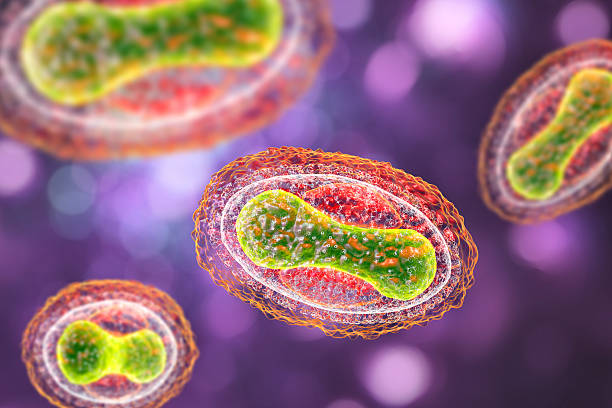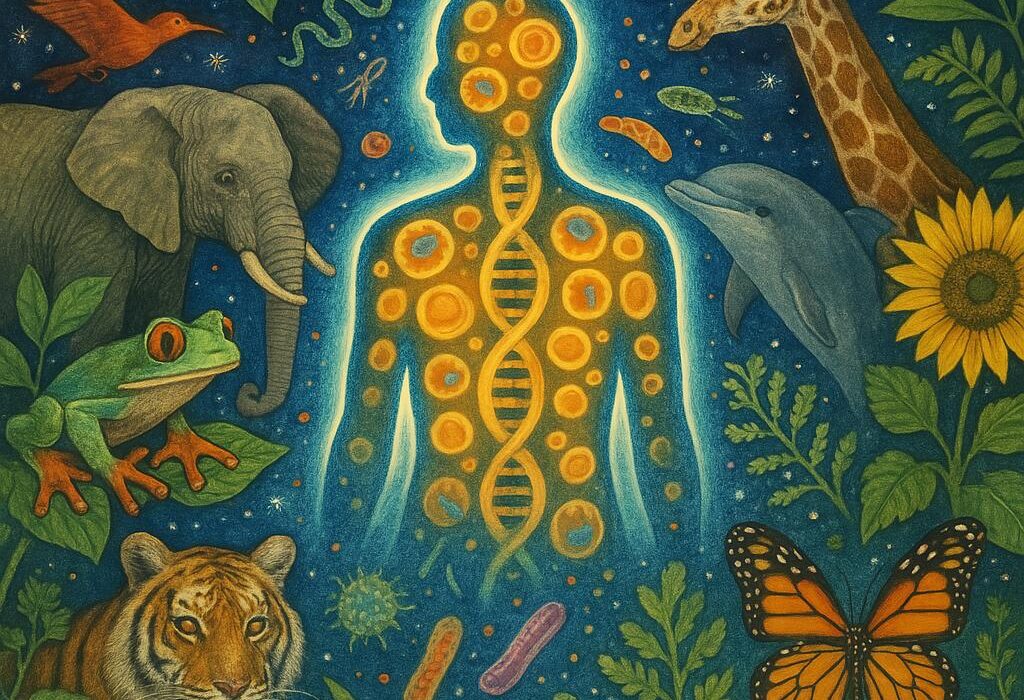For much of human history, disease has been one of the greatest threats to survival. Epidemics could sweep across continents, leaving devastation in their wake. Families lived in fear, cities collapsed, and entire civilizations were sometimes reshaped by outbreaks of deadly illnesses. Yet, throughout this long battle, humanity has refused to surrender. Through the power of science, medicine, and sheer perseverance, we have managed to conquer—or at least control—many of the most dangerous diseases that once claimed millions of lives.
The story of humanity’s victories over disease is not only about scientific discovery, but also about courage, cooperation, and compassion. From vaccines to antibiotics, from sanitation to global public health campaigns, these triumphs have saved billions of lives and transformed the way we live.
Here, we explore 15 of the most dangerous diseases that once struck terror into humanity, but that science has managed to defeat or control. These stories remind us not only of what we have achieved, but also of the importance of vigilance, as new diseases continue to emerge.
1. Smallpox
Smallpox was once one of the deadliest diseases in human history. Caused by the variola virus, it spread easily from person to person, leaving survivors scarred for life. With a mortality rate of up to 30%, it devastated populations for centuries.
Pharaohs, emperors, kings, and common people alike fell victim. Smallpox shaped history, even helping to determine the outcome of wars and conquests. Its disfiguring scars were a lifelong reminder of survival, and for millions, there was no survival at all.
But in 1796, Edward Jenner made a groundbreaking discovery: vaccination. By using cowpox virus to protect against smallpox, Jenner paved the way for modern immunology. Over the next two centuries, vaccination campaigns spread worldwide. Finally, in 1980, the World Health Organization declared smallpox eradicated—the first disease ever eliminated from the face of the Earth.
This victory stands as one of humanity’s greatest achievements.
2. Polio
For most of history, polio was a silent threat, crippling children and sometimes killing them. Outbreaks struck terror into communities during the 20th century, leaving many young people paralyzed. Images of children in iron lungs remain a haunting reminder of this era.
The breakthrough came with vaccines. In the 1950s, Jonas Salk developed the first effective polio vaccine, followed by Albert Sabin’s oral vaccine. These vaccines proved incredibly successful, drastically reducing global cases.
Today, thanks to worldwide vaccination campaigns, polio is close to eradication. Only a handful of cases remain in parts of Afghanistan and Pakistan. While the fight isn’t over, polio’s near disappearance shows how science can bring a deadly disease to its knees.
3. Plague
Few diseases are as infamous as the plague, especially the Black Death of the 14th century, which killed nearly one-third of Europe’s population. Caused by the bacterium Yersinia pestis and transmitted by fleas on rats, plague spread like wildfire through medieval towns.
The terrifying symptoms—swollen lymph nodes, fever, and blackened skin—gave the disease its chilling name. Entire villages were wiped out, economies collapsed, and fear reshaped the course of history.
Today, plague is no longer a global killer. With the discovery of antibiotics in the 20th century, the once untreatable disease became curable. Improved sanitation, pest control, and public health systems have further prevented large-scale outbreaks. Though small numbers of cases still occur, plague is now a shadow of its former self.
4. Tuberculosis
Tuberculosis (TB), once called “consumption,” was one of the most feared diseases of the 19th and early 20th centuries. Caused by the bacterium Mycobacterium tuberculosis, it spreads through the air, slowly destroying the lungs.
TB claimed millions of lives, including famous figures like the poet John Keats and composer Frédéric Chopin. Sanatoriums were built across Europe and America in a desperate attempt to treat patients with fresh air and rest.
The turning point came with the discovery of antibiotics such as streptomycin in the 1940s. Combined with the BCG vaccine, treatment transformed TB from a death sentence to a curable disease.
While drug-resistant TB remains a concern today, the vast majority of cases can be treated successfully—proof of science’s ability to tame even the most stubborn infections.
5. Leprosy
For centuries, leprosy (now known as Hansen’s disease) was one of the most feared illnesses. Caused by Mycobacterium leprae, it affects the skin, nerves, and mucous membranes. Because of the disease’s disfiguring effects, sufferers were often shunned, banished to isolated leper colonies, and condemned to lives of misery and isolation.
But science brought both understanding and compassion. In the 20th century, effective antibiotics—dapsone, rifampicin, and clofazimine—turned leprosy into a curable disease. Public education helped dispel the stigma, allowing patients to rejoin society.
Today, leprosy is extremely rare, and treatment is freely available worldwide. What was once a symbol of hopelessness is now a story of healing.
6. Malaria (Partially Defeated)
Malaria has haunted humanity since ancient times, caused by Plasmodium parasites transmitted by Anopheles mosquitoes. It once killed millions annually, particularly children. Ancient civilizations described its fevers, and it shaped history by influencing wars, settlements, and economies.
The turning point came with the discovery of treatments like quinine and later chloroquine. In the 20th century, insecticides like DDT and bed nets reduced transmission dramatically. More recently, the development of malaria vaccines marks a new milestone.
While malaria has not been completely eradicated, deaths have declined significantly thanks to global health initiatives. Science has not fully defeated it yet—but it has changed the tide of this age-old battle.
7. Yellow Fever
In the 17th to 19th centuries, yellow fever struck terror in port cities, especially in the Americas and Africa. Carried by mosquitoes, it caused high fevers, jaundice (yellowing of the skin), and internal bleeding. Outbreaks killed thousands and disrupted trade and travel.
The breakthrough came when scientists discovered that mosquitoes carried the virus. With this knowledge, targeted control measures became possible. In 1937, Max Theiler developed a highly effective vaccine, which remains in use today.
Now, yellow fever is largely under control. Outbreaks still occur in regions where vaccination rates are low, but humanity no longer fears it as it once did.
8. Diphtheria
Diphtheria, once a dreaded childhood killer, is caused by the bacterium Corynebacterium diphtheriae. It attacks the throat, producing a thick gray coating that can block airways and suffocate its victims. Before vaccines, diphtheria epidemics swept through cities, claiming countless young lives.
The introduction of the diphtheria antitoxin in the late 19th century, followed by widespread vaccination, turned the tide. Today, diphtheria has been nearly eliminated in most parts of the world.
What was once a parent’s nightmare is now a preventable disease, thanks to science.
9. Measles
Measles was once one of the most contagious and deadly childhood diseases. It spreads through the air and can lead to complications such as pneumonia, encephalitis, and death. Before vaccines, nearly every child contracted measles, and many did not survive.
The development of the measles vaccine in the 1960s changed everything. Mass immunization campaigns drastically reduced cases worldwide, saving millions of lives.
Although measles still resurfaces in areas with low vaccination coverage, it is no longer the global killer it once was.
10. Cholera
Cholera, caused by Vibrio cholerae, spreads through contaminated water and food, leading to severe dehydration and death within hours. In the 19th century, cholera epidemics swept through crowded cities, killing thousands and spreading terror.
The turning point came with better understanding of public health. John Snow’s work in London showed that cholera was waterborne, leading to improved sanitation and clean water systems. Oral rehydration therapy, a simple but life-saving treatment, later revolutionized care.
Today, cholera can be prevented with clean water, hygiene, and vaccines, making it far less deadly than in centuries past.
11. Tetanus
Tetanus, caused by a toxin produced by Clostridium tetani, was once a common killer, especially among mothers and newborns. The bacterium enters through wounds, producing muscle spasms so severe they can break bones.
The development of the tetanus vaccine transformed the disease from a constant threat into a rarity. Today, tetanus is preventable through routine immunization and proper wound care.
12. Rabies
Rabies is nearly always fatal once symptoms appear, causing delirium, fear of water, paralysis, and death. For centuries, animal bites carried the specter of rabies, and victims faced a slow, horrifying end.
The turning point came with Louis Pasteur’s development of the first rabies vaccine in 1885. Post-exposure vaccination can now prevent the disease even after a bite, saving millions of lives.
Though rabies still exists in some parts of the world, it is now a preventable disease rather than a guaranteed death sentence.
13. Typhoid Fever
Typhoid fever, caused by Salmonella typhi, once killed millions worldwide. Spread by contaminated food and water, it caused prolonged fever, weakness, and intestinal bleeding.
The discovery of antibiotics and the development of vaccines have drastically reduced its impact. Improvements in sanitation have also helped to control the disease. Once a feared killer, typhoid is now largely preventable and treatable.
14. Influenza (Spanish Flu and Beyond)
The Spanish Flu of 1918 was one of the deadliest pandemics in history, killing an estimated 50 million people. Influenza viruses mutate rapidly, making them unpredictable and dangerous.
But science has fought back with seasonal vaccines, antiviral medications, and global surveillance systems. While flu still kills thousands each year, it no longer causes the catastrophic death tolls of the past.
Ongoing research continues to prepare humanity for future flu strains, ensuring that history does not repeat itself.
15. Whooping Cough (Pertussis)
Pertussis, or whooping cough, once caused epidemics that took countless children’s lives. The bacterium Bordetella pertussis infects the respiratory system, producing severe coughing fits that can be fatal in infants.
The introduction of vaccines in the 20th century dramatically reduced cases and deaths. Although outbreaks still occur in areas with low vaccination rates, pertussis is no longer the menace it once was.
Conclusion
The history of human civilization is also the history of our struggle against disease. Smallpox, polio, plague, cholera, and so many others once defined the limits of human life and survival. Yet science—through vaccines, antibiotics, sanitation, and public health—has rewritten the rules.
These victories remind us of what humanity can achieve when knowledge, compassion, and determination unite. While new threats like emerging viruses and antibiotic resistance challenge us today, the lessons of history show that we are not powerless. We have conquered the deadliest diseases before, and with continued commitment to science and global cooperation, we can do it again.






